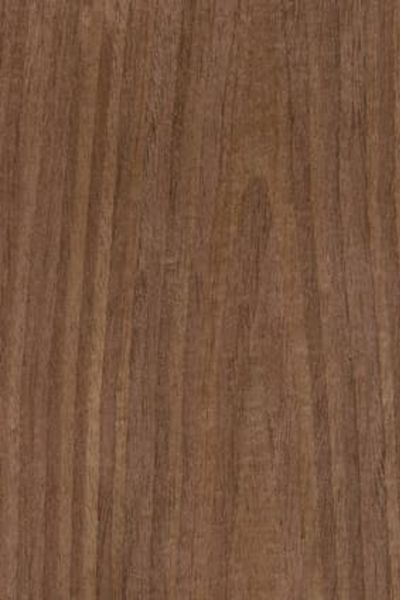-
 Tineo is prized for its unique and interesting colors—the typically pinkish-brown veneer is marked with bold, exotic streaks of purple, dark green, blue, and/or black. Found primarily in South America, this wood is sometimes called Indian Apple. The veneer is straight-grained with a fine to medium texture, and a lovely natural luster. Learn About Veneer Cut & Matching
Tineo is prized for its unique and interesting colors—the typically pinkish-brown veneer is marked with bold, exotic streaks of purple, dark green, blue, and/or black. Found primarily in South America, this wood is sometimes called Indian Apple. The veneer is straight-grained with a fine to medium texture, and a lovely natural luster. Learn About Veneer Cut & Matching -
 This African species is easily recognized by its exotic, tiger-like look—deep reddish-orange with dark stripes that vary from fine lines to heavy, pronounced swatches. Like mahoganies, tigerwood has a lustrous surface, good yields, and is highly adaptable for furniture, cabinetwork, and matched architectural paneling. Learn About Veneer Cut & Matching
This African species is easily recognized by its exotic, tiger-like look—deep reddish-orange with dark stripes that vary from fine lines to heavy, pronounced swatches. Like mahoganies, tigerwood has a lustrous surface, good yields, and is highly adaptable for furniture, cabinetwork, and matched architectural paneling. Learn About Veneer Cut & Matching -
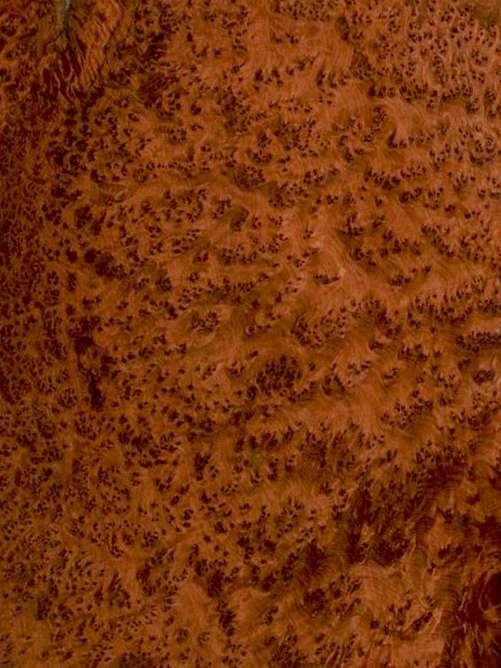 One of the richest, darkest, and most exotically beautiful burls in the world, Roman woodworkers used this precious wood in temples in Biblical times. Today very little thuya is cut for lumber instead, workers dig beneath the ground to harvest the tree’s root burls, which are rotary sliced for the veneer. The aromatic wood varies in color from light tan to deep, rich chocolate brown. The eyes of the figure are typically small and thickly scattered, creating a concentrated burl figure highly sought after for marquetry, custom furniture, and high-end architectural use. Learn About Veneer Cut & Matching
One of the richest, darkest, and most exotically beautiful burls in the world, Roman woodworkers used this precious wood in temples in Biblical times. Today very little thuya is cut for lumber instead, workers dig beneath the ground to harvest the tree’s root burls, which are rotary sliced for the veneer. The aromatic wood varies in color from light tan to deep, rich chocolate brown. The eyes of the figure are typically small and thickly scattered, creating a concentrated burl figure highly sought after for marquetry, custom furniture, and high-end architectural use. Learn About Veneer Cut & Matching -
 Brookside Veneers, Produced by Alpi Spa. Learn About Veneer Cut & Matching
Brookside Veneers, Produced by Alpi Spa. Learn About Veneer Cut & Matching -
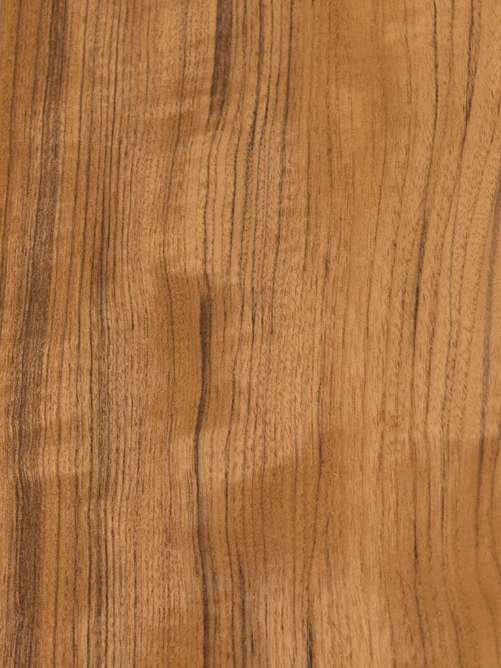 Teak is among the oldest commercial lumbers and remains a popular wood today, particularly in Asia, the US, and Scandinavia. It ranges in color from straw-colored (which some consider the most desirable) to dark, dusty brown with fine, dark, contrasting stripes. Flat cut, the mineral streaks provide a contrasty grain structure in the cathedral pattern, much like American walnut. Pure golden teak without mineral streaking is available, but rare. Reconstituted teak is a manmade product that provides the beauty of teak with outstanding consistency in color and grain from sheet to sheet. Also available in recon. Learn About Veneer Cut & Matching
Teak is among the oldest commercial lumbers and remains a popular wood today, particularly in Asia, the US, and Scandinavia. It ranges in color from straw-colored (which some consider the most desirable) to dark, dusty brown with fine, dark, contrasting stripes. Flat cut, the mineral streaks provide a contrasty grain structure in the cathedral pattern, much like American walnut. Pure golden teak without mineral streaking is available, but rare. Reconstituted teak is a manmade product that provides the beauty of teak with outstanding consistency in color and grain from sheet to sheet. Also available in recon. Learn About Veneer Cut & Matching -
 Teak is among the oldest commercial lumbers and remains a popular wood today, particularly in Asia, the US, and Scandinavia. It ranges in color from straw-colored (which some consider the most desirable) to dark, dusty brown with fine, dark, contrasting stripes. Flat cut, the mineral streaks provide a contrasty grain structure in the cathedral pattern, much like American walnut. Pure golden teak without mineral streaking is available, but rare. Reconstituted teak is a manmade product that provides the beauty of teak with outstanding consistency in color and grain from sheet to sheet. Also available in recon. Learn About Veneer Cut & Matching
Teak is among the oldest commercial lumbers and remains a popular wood today, particularly in Asia, the US, and Scandinavia. It ranges in color from straw-colored (which some consider the most desirable) to dark, dusty brown with fine, dark, contrasting stripes. Flat cut, the mineral streaks provide a contrasty grain structure in the cathedral pattern, much like American walnut. Pure golden teak without mineral streaking is available, but rare. Reconstituted teak is a manmade product that provides the beauty of teak with outstanding consistency in color and grain from sheet to sheet. Also available in recon. Learn About Veneer Cut & Matching -
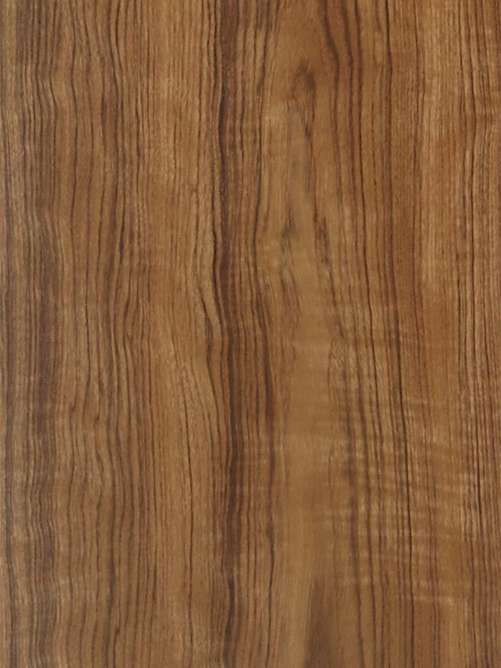 Teak is among the oldest commercial lumbers and remains a popular wood today, particularly in Asia, the US, and Scandinavia. It ranges in color from straw-colored (which some consider the most desirable) to dark, dusty brown with fine, dark, contrasting stripes. Flat cut, the mineral streaks provide a contrasty grain structure in the cathedral pattern, much like American walnut. Pure golden teak without mineral streaking is available, but rare. Reconstituted teak is a manmade product that provides the beauty of teak with outstanding consistency in color and grain from sheet to sheet. Also available in recon. Learn About Veneer Cut & Matching
Teak is among the oldest commercial lumbers and remains a popular wood today, particularly in Asia, the US, and Scandinavia. It ranges in color from straw-colored (which some consider the most desirable) to dark, dusty brown with fine, dark, contrasting stripes. Flat cut, the mineral streaks provide a contrasty grain structure in the cathedral pattern, much like American walnut. Pure golden teak without mineral streaking is available, but rare. Reconstituted teak is a manmade product that provides the beauty of teak with outstanding consistency in color and grain from sheet to sheet. Also available in recon. Learn About Veneer Cut & Matching -
 Brookside Veneers, Produced by Alpi Spa. Learn About Veneer Cut & Matching
Brookside Veneers, Produced by Alpi Spa. Learn About Veneer Cut & Matching -
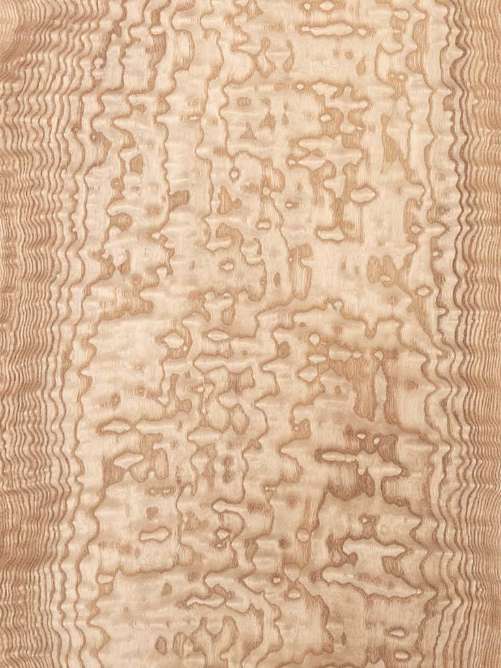 Tamo is the name given to highly figured, rotary cut, Japanese ash. This highly prized veneer is known and sought-after worldwide for its stunning, lustrous, Pommele or "peanut shell" figure—a lively, variable, swirling background with peanut or blister figuring. Colors range from brownish-tan to gray to almost white—all of which provide rare and uncommon options for highly decorative interior spaces and custom furniture. Learn About Veneer Cut & Matching
Tamo is the name given to highly figured, rotary cut, Japanese ash. This highly prized veneer is known and sought-after worldwide for its stunning, lustrous, Pommele or "peanut shell" figure—a lively, variable, swirling background with peanut or blister figuring. Colors range from brownish-tan to gray to almost white—all of which provide rare and uncommon options for highly decorative interior spaces and custom furniture. Learn About Veneer Cut & Matching -
 Actually a maple by genus, sycamore is among the most valuable native broad-leafed trees in Europe. Nearly white in color with a fine, close texture, notable uniform structure, and straight grain that may be figured, this light color wood evokes a minimalist elegance. The flat cut veneer shows the characteristic cathedral pattern. It readily accepts stains and can be dyed to many colors, most popularly a silver-gray. Learn About Veneer Cut & Matching
Actually a maple by genus, sycamore is among the most valuable native broad-leafed trees in Europe. Nearly white in color with a fine, close texture, notable uniform structure, and straight grain that may be figured, this light color wood evokes a minimalist elegance. The flat cut veneer shows the characteristic cathedral pattern. It readily accepts stains and can be dyed to many colors, most popularly a silver-gray. Learn About Veneer Cut & Matching -
 Actually a maple by genus, sycamore is among the most valuable native broad-leafed trees in Europe. Nearly white in color with a fine, close texture, notable uniform structure, and straight grain that may be figured, this light color wood evokes a minimalist elegance. The flat cut veneer shows the characteristic cathedral pattern. It readily accepts stains and can be dyed to many colors, most popularly a silver-gray. Learn About Veneer Cut & Matching
Actually a maple by genus, sycamore is among the most valuable native broad-leafed trees in Europe. Nearly white in color with a fine, close texture, notable uniform structure, and straight grain that may be figured, this light color wood evokes a minimalist elegance. The flat cut veneer shows the characteristic cathedral pattern. It readily accepts stains and can be dyed to many colors, most popularly a silver-gray. Learn About Veneer Cut & Matching


